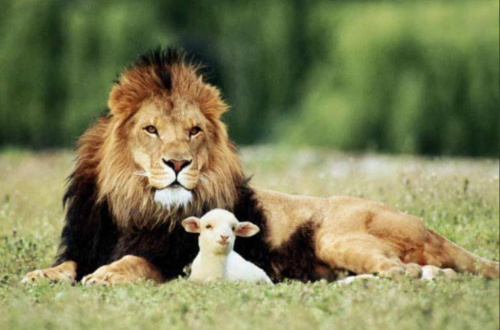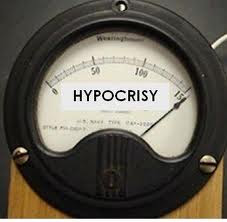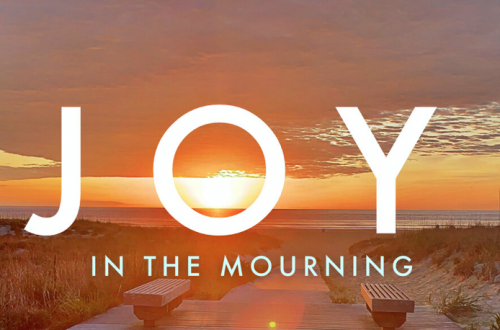A shared meal with God on Mount Sinai
Title: A shared meal with God on Mount Sinai
Aim: To stress that the Lord’s majestic presence abides with His people.
Scripture: Exodus 24:1–11
The geographical context: Mount Sinai
An examination of Exodus 19:1–2 indicates that the events recorded in chapter 24 took place at the foot of Mount Sinai. Some specialists think this is the same place named “Horeb, the mountain of God” (3:1).
Many mountains on the Sinai Peninsula and in neighboring areas have been tentatively identified as Horeb. Ancient Christian tradition says Horeb is Jebel Sufsafeh, a rugged granite peak in the south-central Sinai.
Some scholars think Horeb and Sinai are different names for the same peak. Others think Horeb was a mountain range and Sinai a particular peak within that range. Still others identify Jebel Musa, a peak next to the traditional Horeb, as Sinai.
Regardless of which the above options is preferred, the locale was one of the many mountains on the Sinai Peninsula. Most importantly, it was here that God called Moses to lead the Hebrews out of Egypt and into the promised land.
The historical context: the Hebrews’ exodus from Egypt and journey through the Sinai desert
The Hebrews’ escape from Egypt is recorded and commemorated in chapters 5:1–15:21. The narrative reveals that God brought 10 plagues on Egypt to force the nation to let the Hebrews leave.
Even then, Egypt’s monarch changed his mind and pursued the Hebrews, that is, until Pharaoh trapped them between his army and the Red Sea. While the Lord enabled the Hebrews to travel safely through its turbulent waters, He caused the Red Sea to inundate and drown the Egyptian pursuers.
The accounts of what the Lord did in Egypt would be retold to future generations of the chosen people, as proof of two truths: (1) the Lord was greater than all the pagan deities the Hebrews would encounter; and, (2) the narratives demonstrated that God both cared for the Hebrews and watched over them at all times.
Chapters 15:22–18:27 provide details of the Hebrews’ journey from the Red Sea crossing to Mount Sinai. The Hebrews reached this distinctive mountain in the third month of their journey out of Egypt (19:1).
The theological context: God’s covenant with the Hebrews
When God had first called Moses to lead His people, as a token sign of His promised presence (Exod 3:12), the Lord said that Moses and the people would worship their Creator at Mount Sinai. When they arrived, Moses went up the mountain to receive the words of the Lord for the nation.
At this point, the focus of the narrative shifts to the covenant God would establish with the Hebrews (19:1-3). While the details of what Moses experienced on Mount Sinai are not described, he undoubtedly was filled with reverence and awe while in God’s sacred presence.
On the third day of the Israelites’ encampment at the base of Mount Sinai, the Lord manifested His presence in an awesome display of power and majesty. Exodus 19:16 reveals there was thunder, lightning, a thick cloud, and a loud trumpet blast. The people’s natural response was to tremble with fear.
Two days prior to that event, Moses made an initial journey up the mountain. He did this as the divinely appointed mediator of God’s covenant with Israel, whom verse 3 refers to as the “house of Jacob.” This phrase served as a reminder that the people of Israel were descended from the famed patriarch and the inheritors of the covenant the Lord had made with Jacob.
To provide a historical context for the covenant stipulations to follow, God told Moses to remind the people about their recent past. In particular, the Hebrews had witnessed all the miracles the Lord performed in Egypt on their behalf.
Verse 4 metaphorically compares God to an eagle that lovingly protects its young by transporting them to safety. When an eaglet learns to fly, its parent flies beneath it, spreading its wings to ensure that the eaglet does not fall to its doom.
For God to say that He had been carrying the Hebrews on eagles’ wings indicates His guardianship of His people. Another possible allusion could be that of a bridegroom bringing his bride to the wedding chamber. Both ideas graphically spotlight the intimacy associated with the divine covenant.
The Lord’s covenant with Israel was like the suzerainty treaties devised by ancient Near Eastern kings and their subordinates. Suzerainty treaties had six key elements, each of which is discernible in God’s covenant with the Israelites: a preamble, a historical introduction, general principles for future conduct, specific stipulations, divine witnesses, and curses and blessings. In the covenant devised by God for His chosen people, the Lord (as King) dictated His terms, the Israelites signified their acceptance of the terms, and the covenant was ratified.
God told Moses that if the Hebrews accepted His covenant and obeyed its stipulations, He would consider them His own “treasured possession” (v. 5). In ancient times, such treasures represented a monarch’s most valued property.
The same underlying Hebrew noun is used in 1 Chronicles 29:3 to refer to David’s personal gold and silver that he had reserved for the construction of the Jerusalem temple. The term denoted property that was extremely valuable to the owner, as Israel was in God’s sight (Deut 26:18).
The Hebrews became God’s personal possession when He chose and redeemed them from bondage in Egypt. He did not do it because of their inherent goodness. Instead, it was because He unconditionally loved them and was faithful to the promises He made to Abraham, Isaac, and Jacob.
Even though God is the Lord over all the peoples of the earth, He pledged to use the Hebrews for His own special purposes. They would be God’s own unique people, highly valued and intimately related to Him (Exod. 19:5).
God also said He would make the Hebrews, collectively, a “kingdom of priests and a holy nation” (v. 6). So, the Lord chose the Hebrews, as a group, to serve the rest of the world as priests, with their special purpose being to point all people to the Creator. After all, by definition, a priest is someone who mediates the relationship between God and human beings.
Just as God had promised to Abraham, the patriarch’s descendants were now called upon to be a vehicle of the knowledge and salvation of God to the unbelieving nations of the earth (Gen. 12:3). Like priests, the Hebrews would manifest the Lord’s grace and mercy to the nations of the world.
Also, like the Creator, the Hebrews would be unique and distinct in their behavior. By keeping God’s covenant and obeying His commandments, they would reflect His holy character to the Gentiles.
When Moses informed the elders and the people of Israel about God’s covenant, they unanimously responded that they would obey each of its points. So, Moses (himself acting as a priestly mediator) reported the people’s response back to God (Exod. 19:7-8).
The subsequent chapters leading up to Exodus 24 detail some of the ordinances, decrees, and stipulations of God’s covenant with Israel. Along with giving the Hebrews His law, the Creator also pledged to guide them into Canaan.
The Lord would guard and lead His people by sending His guardian angel. The people in turn were ordered to listen to and obey this celestial emissary. They were not to rebel against him (23:20-21).
The people were told that if they obeyed the angel, God would oppose anyone who opposed them (v. 22). As the heavenly emissary led the people into the land God had promised them, the Lord drove out the indigenous inhabitants (v. 23).
The above promise was a recommitment to the pledge God had made previously to Abraham. The Creator would bestow His favor on those who treated Abraham kindly. Oppositely, those who dealt with the patriarch in a contemptuous manner would experience the Lord’s extreme disfavor (Gen 12:3).
God dealt with the Hebrews in a comparable manner. Specifically, if they were obedient to the Lord and worshiped only Him, He would provide them with food, water, health, children, and longevity (Exod. 23:24-26).
The ethical context: God’s commandments to the Hebrews
After God had recited to Moses both a portion of His law for the Hebrews and a renewed promise that they would occupy the land of Canaan, the Lord told Moses to descend Mount Sinai. Next, he was to direct Aaron, Aaron’s two sons (Nadab and Abihu, who were to have been the next high priests), and 70 elders of the people (who probably represented Jacob’s descendants; Exod 1:5) to ascend Mount Sinai with him.
All the persons in this group, except for Moses, were to remain somewhere partway up the slope of the mountain. In contrast, Moses was to return to the summit of the mountain to further consult with the Lord (24:1-2).
When Moses came back down from the mountain and informed the people about the law God had given him, they agreed in one accord to obey (v. 3). Presumably, “all the Lord’swords” referred to the Ten Commandments (Exod 20:1–17; Deut 5:6–21), while the “laws” (Exod 24:3) denoted additional covenant stipulations.
The Ten Commandments can be broken down into two categories: religious and social. Depending on how the Decalogue is numbered, roughly half of the commandments pertain to the Israelites’ relationship with God. The rest of the commandments deal with the Israelites’ relationships with each other.
Exodus 20:1 says, “And God spoke all these words.” The reason the Ten Commandments are authoritative is that they come directly from the Creator.
Moses next conscientiously recorded the Lord’s directives (Exod. 24:4). The roll of parchment Moses used became known as the “Book of the Covenant” (v. 7), which Moses read to the Hebrews and they agreed to obey.
In ancient Near Eastern covenants, the subordinates had to agree to heed the conditions of the pact before it could be ratified. It was also common that the conditions of the covenant to be recorded in written form. Clearly, God’s covenant with the nation of Israel was carried out according to the cultural standards of the day.
The sacrificial context: God’s atonement of the Hebrews’ sins
Early in the morning, after Moses recorded the Lord’s instructions, the lawgiver arose and built an altar at the base of Mount Sinai. He arranged 12 “stone pillars” (Exod 24:4) to represent the 12 “tribes of Israel.”
Since the Levitical priesthood had not yet been established, Moses sent many of the firstborn men from among the Hebrews to sacrifice “young bulls” (v. 5) as a sign that the people were determined to worship only God. The various offerings formally sealed the covenant and revealed that the Lord’s acceptance of the Hebrews was based on sacrificial atonement for their sins.
Next, Moses placed half the blood from the animals into bowls, and later sprinkled it onto the people, symbolizing their oath to obey God (vv. 6, 8). Then, after the Hebrews affirmed their intent to heed all the stipulations of the covenant (v. 7), Moses sprinkled the other half of the animals’ blood on the altar.
The preceding action symbolized God’s forgiveness of the Hebrews and His acceptance of the offering. In such a blood ritual, the two parties of a covenant were organically united into a sacred bond—of “one blood,” as it were.
The sacred context: God’s celestial throne room
Sometime after the people had symbolically sealed God’s covenant with them, Moses, Aaron, Aaron’s sons, and the elders of Israel ascended Mount Sinai (Exod 24:9). At some unidentified spot up the slope, they witnessed a manifestation of the Creator’s sacred presence.
Verse 10 describes the “God of Israel” using impressionistic, vivid terms the Hebrews could understand. The Septuagint version is even more explicit than the Hebrew text. In English, the ancient Greek translation reads, “And they saw the place, there where the God of Israel stood.”
A superficial reading of the preceding verse exists in tension with other biblical passages. For instance, John 1:18 states that no person has ever “seen God.” Similarly, 1 Timothy 6:16 declares that the Creator “alone is immortal,” dwells in “unapproachable light,” and can never be seen by people.
Perhaps the best way to resolve the preceding tension is to recognize that God never disclosed His essential, resplendent being to people. Instead, what the members of the covenant community in ancient times saw were indirect manifestations of the Redeemer’s luminous presence (Num 12:8).
On one level, the human eye can neither detect the Creator’s fully revealed essence nor survive the direct sight of His infinite, eternal glory. Yet, on another level, the incarnate Son, who is Himself God, has fully unveiled the Father to humankind (John 1:18).
Exodus 24:10 is comparable to descriptions found in pagan Canaanite literature of Baal’s regal palace located at the summit of Mount Zaphon. Baal was a fertility deity, a storm-god, and a prominent figure in the Canaanite pantheon.
Considering the preceding cultural context, it is reasonable to conclude that the members of the entourage who journeyed with Moses up Mount Sinai saw God’s celestial throne room (see 1 Kings 22:19; 2 Chron 18:18). In this case, Exodus 24:10 used a well-known literary motif to describe the majestic splendor of the seemingly remote, ineffable Creator.
Beneath the feet of the sovereign of the universe was a mosaic, tile-like expanse made from “lapis lazuli.” This refers to a semiprecious, transparent stone that has an intense, deep, sky-blue color. In Ugaritic texts dating from the second millennium B.C., this material symbolized the royalty and honor attributed to pagan deities.
The Creator told Moses that no human could directly see the all-glorious Lord and remain alive (Exod 33:20; see also Exod 19:10–24; Judg 13:22). Yet, mercifully, in the solemn circumstance involving the entourage on Mount Sinai, God did not end the lives of the prominent Hebrew leaders (Exod 24:11).
Rather, the Creator permitted Moses and his peers to see a visible form of God’s radiant presence. The Lord even permitted them to eat and drink while on the mountain.
During the era, two parties would ratify an agreement by partaking of a fellowship or covenant meal (Gen. 26:30-31; 31:46, 53-54; Exod 18:12). Moses and those accompanying him communed in peace, safety, and joy in the presence of the Creator.
The above means of sealing the covenant prefigured the eucharistic observance of the Lord’s Supper. Indeed, the salvation in which Christians now take delight was made possible by the Lord’s new covenant, which was sealed by Jesus’ atoning sacrifice on the cross (Luke 22:15-20; 1 Cor. 11:25-26).
For thought and application
David Geoffrey Moore of Berkeley, California, was 19 and just out of high school when he joined a cult named Heaven’s Gate. On March 22, 1997, he was one of 39 members who committed suicide in Rancho Santa Fe, California.
The members hoped to link up with the Hale-Bopp Comet and ride for eternity with the Creator. Their faith was based on a mixture of science fiction, the Bible, and New Age superstition.
David was only one of many seeking meaning in the cult. He and his peers fit the typical psychological profile of those who join cults. For example, any individual with an unsatisfied spiritual longing is a prime candidate.
In contrast to such people as David, the Hebrews did not have to look to the pagan beliefs of the ancient Near East to satisfy their deepest spiritual longings. For the entourage that accompanied Moses up Mount Sinai, God’s sacred presence was their assurance that their Creator was always with them.
This side of Calvary, the promise of the constant companionship of the Son through the Holy Spirit also assures us that we are not alone in the universe. This truth means that we do not have to turn for guidance to astrological charts, crystal power objects, tarot cards, New Age teachers, magic, witchcraft, or any occult source.
Moreover, as new covenant believers, we now have direct access to the Creator. After all, when the Messiah was crucified at Golgotha, the “curtain of the temple was torn in two from top to bottom” (Matt. 27:51).
As a result, the barrier between ourselves and God has been eliminated. The Father, through His Holy Spirit, is now present within all believers to guide, watch over, and provide for them. Truly, He is sufficient!


